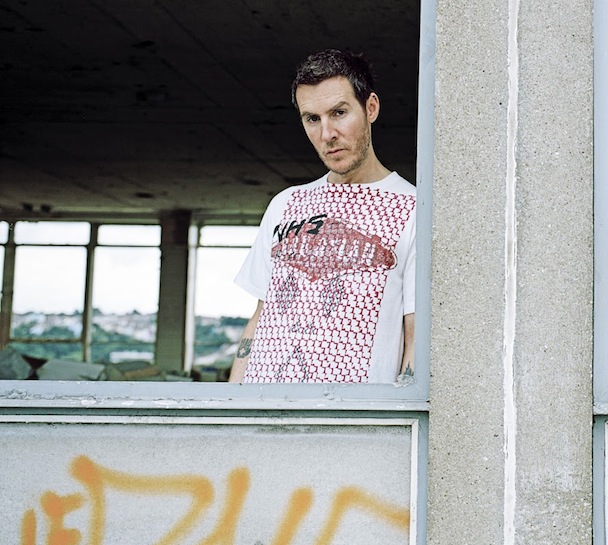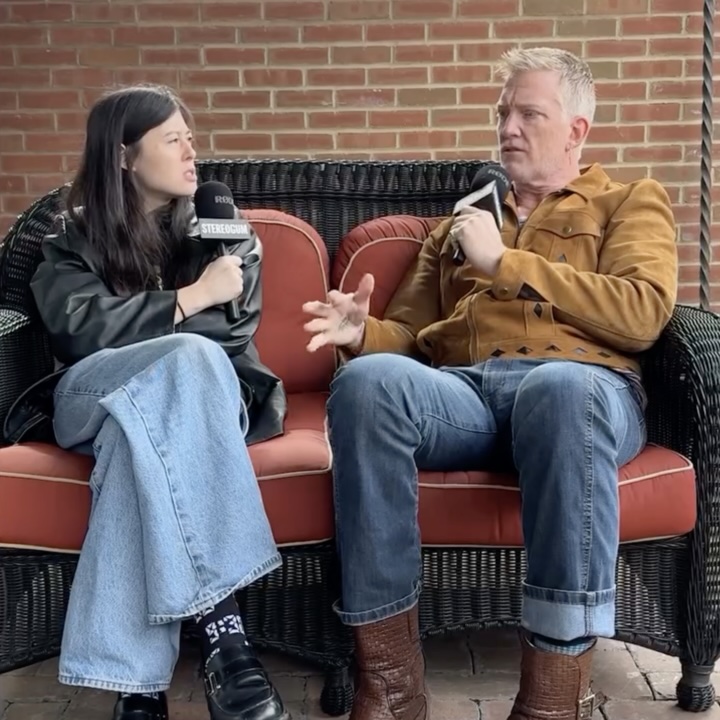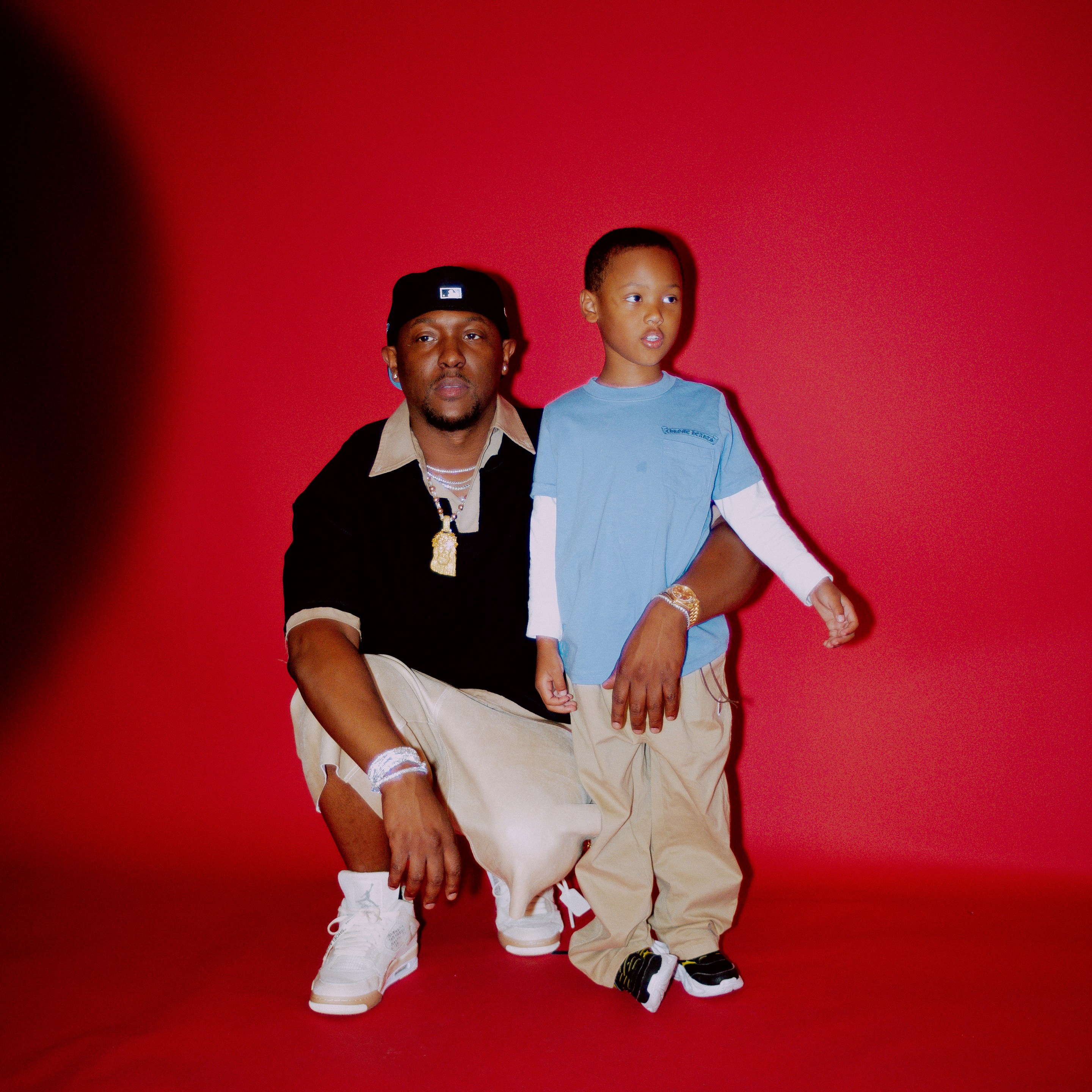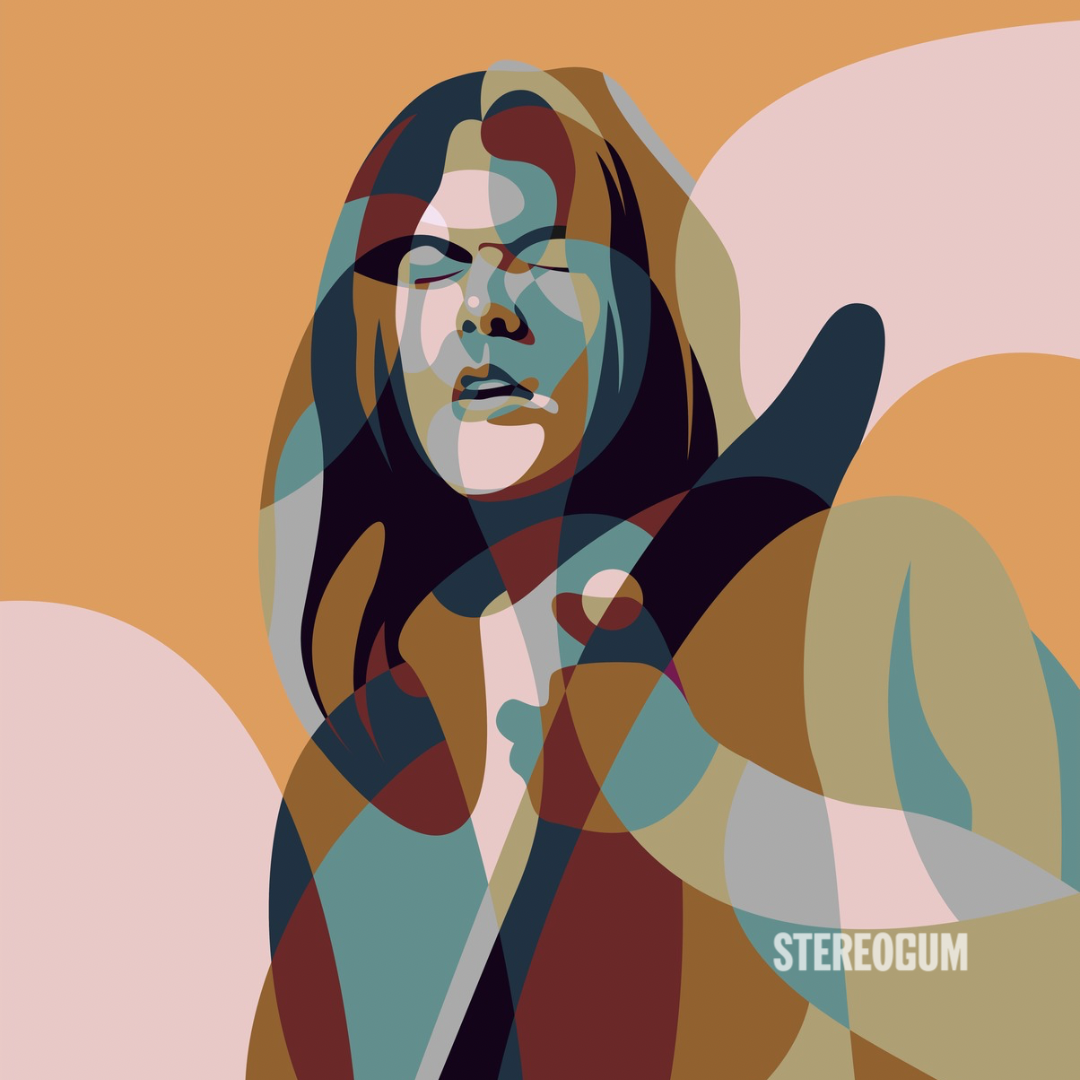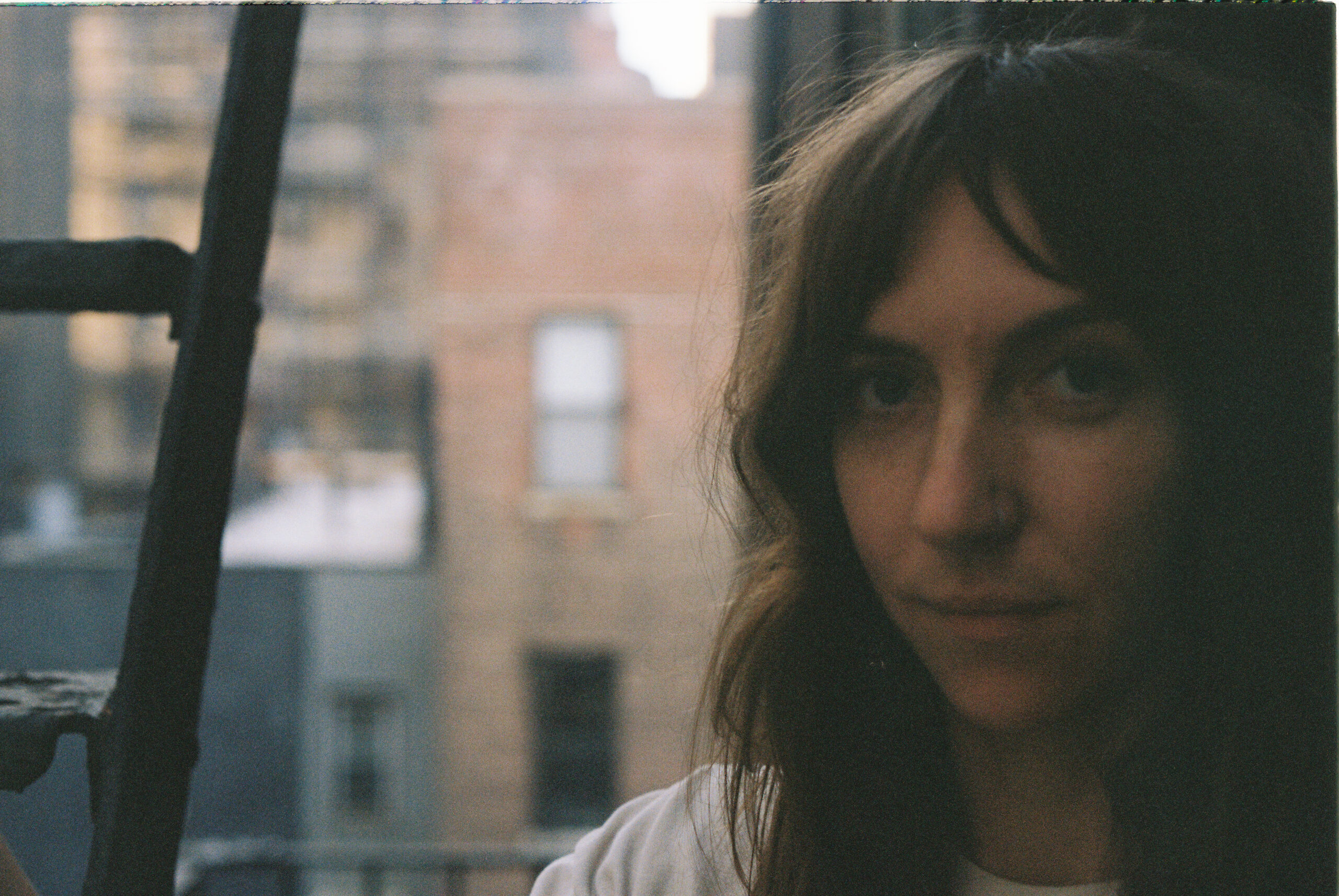Later this month Massive Attack's Robert Del Naja (better known as 3D), will bring MASSIVE ATTACK V ADAM CURTIS to New York City's gigantic Park Avenue Armory. The collaboration, which first premiered at the 2013 Manchester International Festival, is described as "a new kind of imaginative experience that integrates music, film, politics, and breathtaking moments of illusion in a hallucinatory ride through the dreams and hidden realities of our strange, anxious age" and it plays like something of a dream come true for Massive Attack fans (the show features live vocals from longtime cohorts Liz Fraser and Horace Andy) and admirers of Curtis's documentary work (the excellent The Century Of The Self is a good place to start if you aren't familiar.) I called up Del Naja to discuss how the project came to be and what this collaboration means for the future of Massive Attack.
STEREOGUM: I know that you are no stranger to film scoring and putting together collaborations with other musicians, but this project really pushes things into new territories. How did you and Adam first connect?
ROBERT DEL NAJA: I was asked if I'd like to create a new show for the Manchester International Festival, and I'm a big fan of that festival because I've watched Damon Albarn -- who is a friend of mine -- put a few shows together there, including a show for Gorillaz and the Monkey opera and the Doctor Dee opera. When I was asked, I thought, "That's great -- I'd love to." The thing that struck me was the possibility of whether we could take one of Adam's films, work with him on it, and turn it into a live experience. Initially, my starting point was that this experience should be something like a crazy trip. Like a drive-in movie on acid where you were confronted by the film. For instance, he makes kind of a political ghost story, in a real life environment with a band. I wondered if we could do that. I wondered if we could create a musical piece and a film at the same time and have it be coherent and be political. I felt like a lot of what I was seeing, particularly in electronic dance music, was that everyone was using polytechnics and lasers and trying to outdo each other with visuals … but it was becoming nothing more engaging than supersonic eye candy. I thought that I'd like to do something that had some meaning. We'd been using and dealing with issues like this in our shows for the last ten years with the work that I do with the guys from UVA [United Visual Artists] on our own visual show but this was going to be a step up in terms of journalism, storytelling, and politics.
STEREOGUM: So the film itself actually evolved along with the music? They were created at the same time?
ROBERT DEL NAJA: Yeah, exactly. For the first year, we basically just spent our time discussing how we were actually going to do it -- how could we actually stage this and design this to get people in the room and make this feasibly happen? How would we stage the music? How would the film be shown and how would we incorporate the band with the film? At the same time, Adam started to develop a storyline within the film and we'd spoken about issues that he wanted to cover and issues that I felt strongly about and we started to weave a film together. Then, we started suggested tracks to each other like two DJs making a playlist. At the same time, I also started discussing with UVA how we might incorporate a stage, these screens, this film and the music. It was built like a collage. It was fun. It's something new and it's stepping outside of my box, which I needed to do and, for Adam, it was stepping outside of his comfort zone as a filmmaker and a journalist by doing something in a live and immediate environment.
STEREOGUM: For you, what have been the biggest challenges involved?
ROBERT DEL NAJA: I think the production itself. Trying to work out if you could tell this story in 90 minutes and keep the audience engaged and then suddenly interrupt it and make it slightly chaotic and exciting and anarchistic … but then keep it coherent at the same time so people weren't just switching off like I described before by just making it a purely visual candy experience and not really touching people. We wanted to do this in a way that the story had romance and love and sadness and it was very political. Trying to make that coherent visually and sonically was the really the tough part of it in the planning. Even up to five months before the actual first performance, I remember thinking that this wasn't going to work. Because I've never done it before -- maybe not since the first time we stepped on stage as a soundsystem outside of our original soundsystem roots. It was only until the film started and the score we had prewritten started to kick in and the audience fell silent that I thought that maybe it is going to work and maybe they will listen and engage.
STEREOGUM: What do you hope people's takeaway is from the film? Or in terms of subject matter, what were the most important things you wanted to try and address?
ROBERT DEL NAJA: For me, it was about an engagement with the audience in the sense that we tell a story, we play some music and you come out of it in the end enlightened by an idea or a set of ideas. Not "I didn't know that" but "Yeah, I knew that and now I know more about how we got to where we are currently as a collective society and what we should do next." Being able to see the mechanics -- the wires, the levers, and the cogs -- and ask what we should do next. Leave it with a positive sense. In order to suggest a positive outcome, you need to suggest all of the traps and the banana skins and the cracks in the pavement and all of the dangers and pitfalls in order to get beyond it. I think that's what the film does. It talks about what we are now as a collective society and our political structures that govern that and what to do about it.
STEREOGUM: From a musical standpoint, how did you approach it? I understand there are a lot of cover songs involved.
ROBERT DEL NAJA: It's really exciting because for years I've wanted to do cover versions in a live situation but I felt that, in a sense, I'd never fully managed to. Some of the things in the film are about [how] the modern state of risk assessment and management means that we only look at the past to head off any possibility of risk in the future and therefore live in a pretty static and safe way. In the social media sense, the algorithms will remind us of what we did yesterday and suggest that we do it again tomorrow but you get caught in sort of a feedback loop, which is a subject that Adam has touched upon before in previous films. I think, as a band, you end up doing the same thing because you get trapped by your past and your own history. Even though we try to do something different and make a new record, you are very aware of the history of the band and the demands of an audience. A gig is a shared experiential event and people come to see you and enjoy themselves. You can do your thing, but you have a responsibility to stay true to the history of the band, and I always felt governed by that slightly, even though I've always tried to do the opposite. I'm still very aware that I can only go so far but this meant that we could go completely wild and do something completely different and play music that we've never played as a collection of musicians. So for this project we covered everything from Siberian punk to vintage songs you might hear a wedding band play. We go into electronic territory with Burial and Nine Inch Nails. We go into vintage rock and blues with Leadbelly and Nirvana. We also do "Bela Lugosi's Dead," which is a dream for me because I've been singing it in the bath for thirty years and I've always wanted to play it live. At some points, we do a mashup of the Sugababes and "Safe From Harm." We don't play much of our music -- even the "Karmacoma" track, we play a remix version because it reflects a scene in the film where things stop making sense, and it's a good piece of music for that. It's been great because it's cathartic. For me, I get to play a lot of different roles. I use a vocoder in certain songs to change my voice, which I've never done at a gig. So I can use my own voice for some tracks and I can go low for "Bela Lugosi" and some songs I can sing like a girl for the backing vocals in "Just Like Honey" by the Jesus And Mary Chain. Things that I would never get away with on stage normally.
STEREOGUM: What's the future of this project? Will it be staged in other places after New York?
ROBERT DEL NAJA: New York is the final stage of this trilogy of shows that were in Manchester and Germany. Next year, I think we could maybe adapt it because obviously we haven't been to London, LA, Toyko, Paris, or Rome … and because of the nature of the show and the nature of the music and the politics itself, it would be a terrible waste to not travel with it. And we translated it to German -- the way we do our show is that we translate it to the local language because it means that the show is not an English-centric show and it's international, which is really important. It would be great to take it around even if we had to adapt and minimize it slightly so it's not a giant installation and instead it's something that you can put into theaters.
STEREOGUM: What is the live setup? How many people are you playing with?
ROBERT DEL NAJA: There's only a few of us on stage -- myself on keys and vocals, Angelo Bruschini who has been playing guitar with us for a long time, and Sean Cook and Damon Reece previously of Spiritualized on drums and bass, Elizabeth Fraser, Daddy G of course, and Horace Andy. We're very fortunate to have some amazing vocal talents with us.
STEREOGUM: You're one of the few people that can coax Liz into singing in front of people, which is such a special and amazing thing.
ROBERT DEL NAJA: Exactly. And I think this show really appealed to her. There are two songs that we sing in Russian -- one that myself and Sean do and one by Elizabeth sings in Russian, which is more of a punk ballad. It's fun and a challenge to do that sort of stuff and I think that excites her.
STEREOGUM: I know it's been a couple of years -- almost three years -- since the last Massive Attack record. How do you feel this experience speaks towards the future of Massive Attack?
ROBERT DEL NAJA: It's funny. Even while we were putting the show together, I had a bunch of tracks I had been working on for the next record. But since this show, there are almost two different records to be had out of it. There's one that I feel like making that's almost a soundtrack to a film that doesn't exist based on some of the experiences of the show. Instead of working on a record that has a particular sound, maybe a record that sounds like it was compiled by a filmmaker from different times, places and genres. At the same time, the tracks I've been working on and the tracks that G's been working on may fit more conveniently into the Massive Attack timeline. I don't know what would be better -- I veer toward the side of doing something completely different. And maybe this experience is going to inform that.
///
MASSIVE ATTACK V ADAM CURTIS runs 9/28 through 10/4 at NYC's Park Avenue Amory. Watch the trailer now:
[videoembed size="full_width" alignment="center"][/videoembed]
